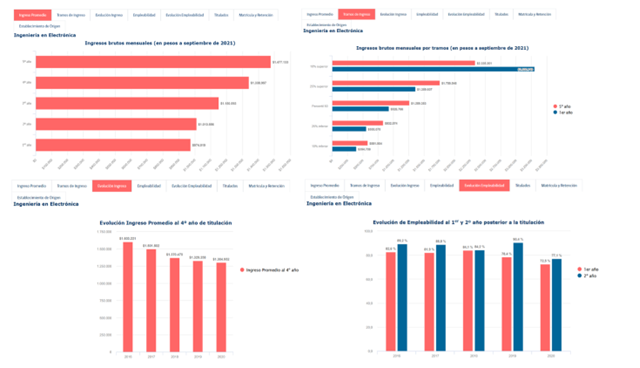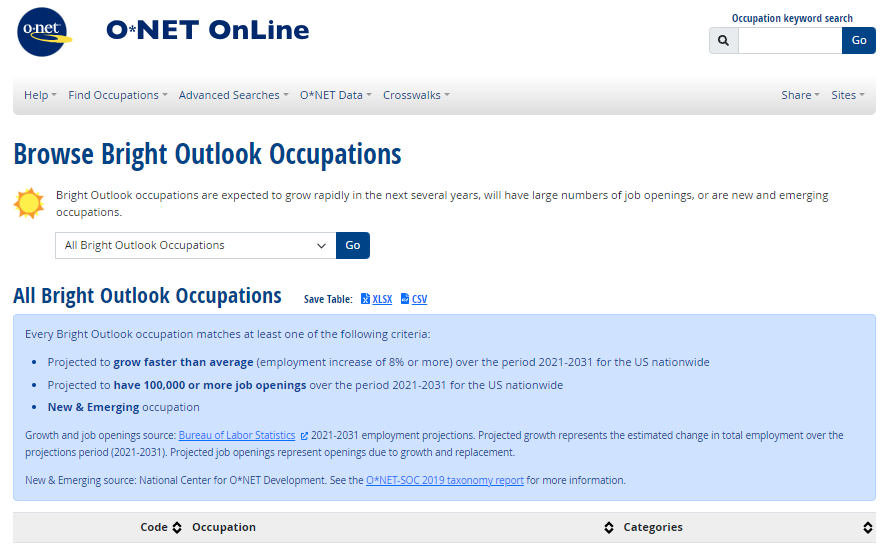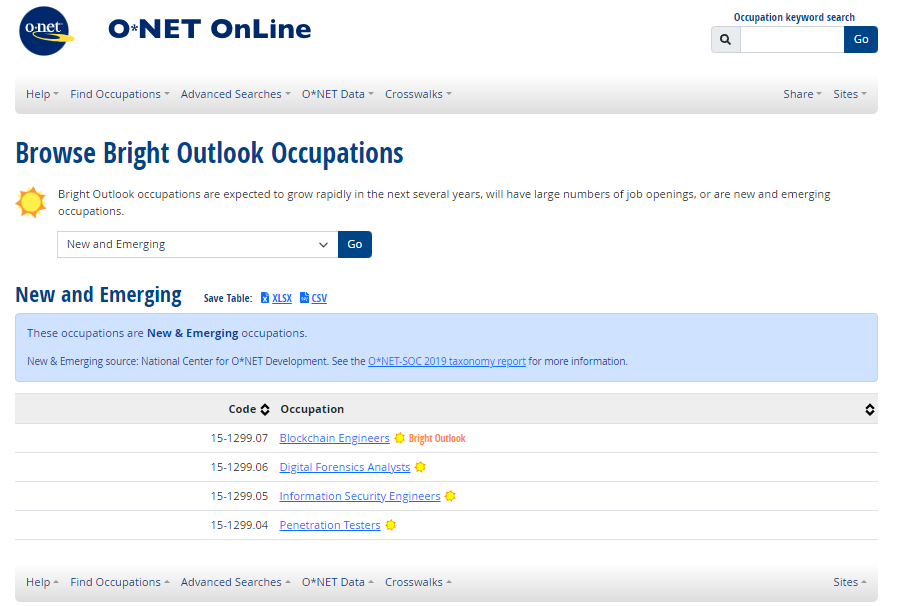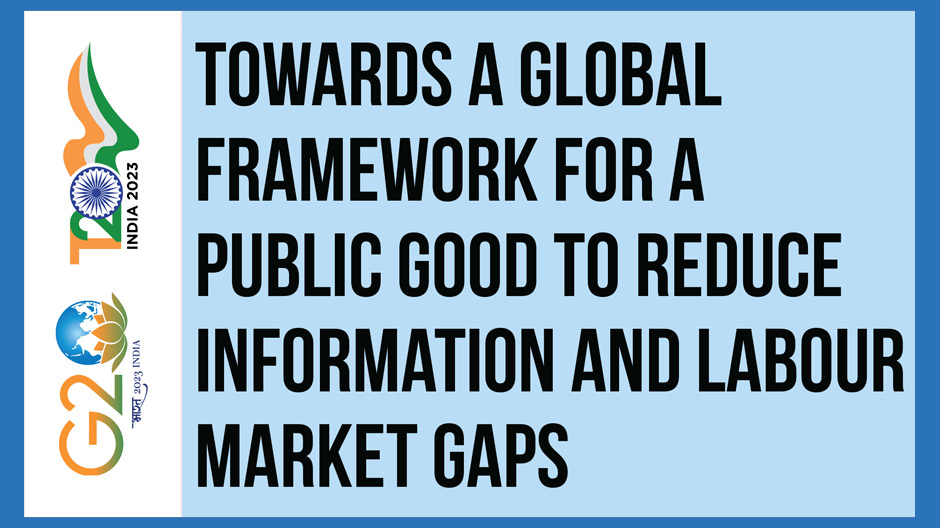Task Force 2: Our Common Digital Future: Affordable, Accessible and Inclusive Digital Public Infrastructure
The Fourth Industrial Revolution is forcing countries to face difficult challenges in responding to their workforce’s new skills requirements. Workers, particularly in developing countries, are lagging in terms of technological diffusion and the adoption of new skills. A key obstacle in addressing the skills mismatch is the lack of updated statistics that incorporate the latest changes in the labour market and the new skills demanded. This Brief recommends that the G20 develop a global framework to reduce information and labour market gaps. The proposed global framework would feature a digital platform with up-to-date data and information, which is disaggregated by the demanded skills. Such a platform would better inform workers, students, and companies about educational trends, employment needs, and training strategies. It would provide guidelines for the generation of a sound information system and encourage the production of easily accessible and customised information.
1. The Challenge
The world is undergoing the Fourth Industrial Revolution, with new technologies and knowledge-based industries becoming central to countries’ labour productivity. Likewise, the acceleration of technological change is reconfiguring employment, labour relations, and required skills. Low- and middle-income countries are facing acute challenges to respond to the new workforce’s skills requirements. According to a 2018 World Bank survey, the lack of workers with the required skills is one of the main obstacles to business development in Latin America and the Caribbean.[1] Accenture has estimated that, if the G20 countries fail to adapt to the new technological era, they could forego up to US$11.5 trillion in GDP growth over the next 10 years.[2]
Well-designed framework policies can boost labour productivity by reducing skills mismatch.[3] Without a qualified workforce that has skills aligned with labour market needs, the prospects for increasing the productivity of the entire economy remain constrained. For example, the McKinsey Global Institute[4] finds that automation will raise productivity in the world economy by 0.8 percent and the annual GDP by 1.4 percent.
The potential productivity growth is even more crucial for developing countries since it can give them a chance to reduce the income gap with developed countries. Studies show that developing countries are lagging in terms of technological diffusion and the re-skilling of their current and future labour force.[5] This could exacerbate development gaps with respect to advanced countries as has happened in previous technological revolutions. By the same token, country-specific structural factors such as demographics, factor endowments, and gender gaps will affect the idiosyncratic ways in which new technologies impact labour markets in developing economies.
In this context, public policies must facilitate a permanent learning path to train workers in new skills, while being able to offset the costs of the adjustment associated with this transition. To do this, it is essential to design policies that give workers an early start in skills acquisition so they can adapt to labour market changes and move up to acquiring advanced cognitive skills. Formal education plays a fundamental role, but so does vocational training in guaranteeing routine learning that adapts to the constant reconfiguration of skills, even within the same occupation.
The challenge for workers is to keep up with the labour market’s rapid changes. For instance, the emergence of OpenAI’s ChatGPT has quickly spread across the globe with the potential to disrupt all types of tasks, including both low- and high-skilled ones. ChatGPT has already showed it can do a myriad of things that were unthinkable a few years ago, including sending an email with appropriate tone and content that adjusts to different situations, write a letter of recommendation to apply for a job or scholarship, translate commands from one statistical programming language to another, and even summarise and discuss the implications for the future of employment. Around 80 percent of the US workforce could have at least 10 percent of their work tasks affected by the introduction of large language models (LLMs) such as ChatGPT, while approximately 19 percent of workers may see an impact in at least half of their tasks.[6] Furthermore, “the projected effects span all wage levels, with higher-income jobs potentially facing greater exposure to LLM capabilities and LLM-powered software.”[7] Even design and creative tasks that were the epitome of non-automatable duties can now be replaced using artificial intelligence (AI) programmes that create images from textual descriptions such as DALL-E. In this context, one of the main obstacles to addressing the labour market’s rapid changes is the difficulty for official statistics to stay current and relevant. In turn, governments struggle to update curriculums for formal education and vocational training, while workers and students remain unprepared for labour market changes.
This topic is not new to the T20 agenda. During Argentina’s presidency in 2018, the T20 already warned that “as the pace of digitalization and automation accelerates globally, and more disruptive innovations in machine learning, artificial intelligence and robotics are expected, new data sources and measurement tools are needed to complement existing valuable statistics and administrative data. This is necessary to better understand the impact of technological change on the labour market and the economy and better inform policy decisions for inclusive people centred growth.”[8]
A way of approaching these challenges lies in better data collection and measurement. Specifically, more detailed and up-to-date information is needed on changes in job requirements and skills demanded, so that policymakers can make informed decisions about education, lifelong learning, training strategies, and support for workers during times of transition. Currently, countries’ labour information systems offer statistics by economic sectors, but only a few include information disaggregated by tasks and skills levels. Moreover, they use administrative data and surveys, but neither utilisation of synergies with the private sector and labour platforms, nor an extensive adoption of new technologies and AI that would allow for quicker gathering of high frequency data at a low marginal cost are common.
2. The G20’s Role
Following the Digital Economy Ministerial Declaration in Italy, 2021, the G20 must remain engaged “following up on the G20 Roadmap toward a Common Framework for Measuring the Digital Economy, developed under the Saudi Presidency” and “encourage improved measurement of the digital economy and ongoing discussions on the dynamic aspects of this topic to support evidence-based policy development.”[9]
The fact that the G20 “acknowledge the importance of developing sound statistical infrastructures, including through dedicated statistical surveys, appropriate domestic, national and international legal and technical frameworks for data access and use”[10] should serve as a guide for countries to work on the development of their digital public infrastructure (DPI) for digital entrepreneurship, skills, and jobs of the future.
3. Recommendations to the G20
Countries can fully benefit from productivity gains enabled by the digital era by improving their capacities to keep pace with the labour market changes. The G20 countries have an opportunity to lead in the development of a global framework that can reduce informational and labour market gaps. Specifically, the G20 can advance the development of such global framework by building the following three-pronged system to generate, visualise, and communicate valuable information on skills to all labour market actors (workers, students, firms, and governments).
Create framework and guidelines for the generation of a sound information system
- Gather and provide all existing labour data, not only traditional statistics at the level of the economic sector or employment type, but also disaggregated by skills and tasks. One challenge in doing so is the lack of a skills taxonomy. While several countries have taken steps to generate their own taxonomy,[11] a common language needs to be generated that includes a skills taxonomy akin to the aggregated traditional categories, such as the International Standard Classification of Occupations or the International Standard Classification of Education. This is where the work of harmonisation and exchange can serve to generate a common language that addresses the new statistical needs of future work.
- Leverage traditional data with new data-gathering mechanisms. Examples of these include generating cross-references between governments’ various administrative databases. This would entail labour trends using labour market databases and formal educational system databases, and vocational training institutions using traditional surveys created to assess the labour market with methodologies that capture new dimensions and disaggregate data in line with new needs.
- Use non-traditional data sources and leverage the use of new technologies, such as AI to generate high-frequency data at low marginal cost.[12] Big data analysis of online job vacancies through data science tools such as the Skills Online Vacancy Analysis Tool for Europe in the European Union[13] or the Internet Vacancy Index in Australia[14] are examples of some helpful initiatives. The main advantage of these data lies in the possibility of performing a granular, updated, instantaneous, and low-cost monitoring of the trends that exist and emerge in the demand for skills. Some private initiatives are already taking advantage of AI in this sense. For example, SkillsNet provides a software to effortlessly measure workforce skill data, personalise training, and manage certifications to close skill gaps.
- Take advantage and be able to combine information provided by different sectors, such as the public sector, private companies, job search platforms, and educational establishments.
- Ensure benefits for all stakeholders in the labour market including students, workers, firms, and governments, and education establishments:
- by providing students with precise information on potential benefits, income prospects, job placement, occupations, and required skills to aid them in making informed career choices;
- by showcasing workers’ skill demands and presenting available training opportunities;
- thirdly, by visualising the skill gaps faced by private companies and informing them about prevailing skill trends within their industries; and
- lastly, by delivering accurate skill demand data to the education sector, enabling them to make informed decisions regarding investment and curriculum design aligned with the needs of the labour market.
Create a labour and skills platform that engages users and adjusts to the needs of different target audiences
Countries have platforms that provide information related to the labour market with various objectives and scope. Some countries use web platforms that provide advice on academic decisions (specifically in higher education) for students and young professionals. Portals such as Ponte en Carrera (Peru), Mi Futuro (Chile), and Observatorio Laboral (Mexico) have been created with the explicit objective of improving the information that students need to make career decisions. These portals highlight the value of different higher education alternatives by providing indicators such as employability rates, the average income of graduates in different careers, and training opportunities.
Figure 1: Descriptive Statistics of the Professional Insertion of Electronic Engineering Graduates in Chile

Source: “Mi Futuro”, Ministry of Education, Chile[15]
Building upon these initiatives, the G20 can provide a framework for countries to build labour and skills platforms with the following features:
i. The platforms can include a ranking of the latest and the most demanded skills, and ones that are becoming obsolete. This information would help track current or short-term labour market requirements and guide students and workers in career decisions and training options available in the public sector and educational institutions. In addition, it would allow companies to understand where the industry is heading in the economic sectors in which they operate. Figure 1 shows an example of the “Bright Outlook Occupations” segment provided by O*NET.
Figure 2: Example “Browse Bright Outlook Occupations”, O*NET Platform


Source: O*NET
ii. Such a platform can provide students and workers with a better understanding of existing career paths with their respective employment and income returns. Digital platforms that enable better informed decisions about pursuing higher education and are tailored to the expectations of students and families have many advantages. First, they limit inaccurate perceptions about the potential economic returns and professional growth of higher education options, which are fundamental variables when deciding human capital investments.[16] Second, by correcting inaccurate perceptions, they have a positive effect in linking workers to professional careers with high success rates in terms of employment and income.[17]
iii. The proposed platforms can provide information about training opportunities to orient students and workers in their decision-making process, including a comprehensive list of careers and courses related to the skills associated with the latest labour market trends, with data disaggregated by institution, location, course modality, links to the institution, and funding options. This information would also allow education providers and policymakers to guide investment or policy decisions towards labour market gaps.
A G20 network to foster dialogue and exchange of experiences among member countries with the following purposes
- The G20 network can exchange best and new practices in generating labour information that responds to the latest needs. It can promote dialogue spaces for discussion in which different countries exchange their experiences and lessons learned.
- The proposed network can generate a common language to capture the labour market’s latest trends and relevant data and information, generating a taxonomy to better inform policymakers. The G20 should publish regular reports and conduct statistics workshops facilitating the global utilisation of the information.
- Such a network can facilitate the use of tools and technologies necessary to implement the recommended framework and guidelines in developing countries.
- The G20 network can enhance an evidence-based public discussion and offer leading contributions ahead of the annual G20 summit.
In the past, the G20 has undertaken initiatives that promote the measurement of the digital economy and the adoption of common criteria among countries. One initiative is the Toolkit for Measuring the Digital Economy published by the G20 in 2018.[18] This toolkit offers potential measurement approaches that facilitate evidence-based policymaking and serves as a comprehensive guide for countries to implement standardised measurement activities. Another notable initiative is the Organisation for Economic Co-operation and Development’s “Report for the G20 Digital Economy Task Force: Roadmap toward a Common Framework for Measuring the Digital Economy,” which was developed as a valuable input for the discussions in the G20 Digital Economy Task Force in 2020.[19] This report identifies the key areas of work that should be encompassed within the G20 Common Framework. Both initiatives highlight the priority of undertaking such endeavours with a focus on skills.
Other existing initiatives that could provide a template for the actions recommended in this paper include the Future of Work in the Global South (FOWIGS) network of think tanks.[20] FOWIGS brings together data and knowledge to build evidence-based narratives on the future of work and develop the global research network. Another example is the T20 digital platform for Accelerating the Jobs of the Future.[21] “The platform would produce and disseminate analytical material, promote high-level forums, connect public-private experiences, design policy solutions and drive collaborative initiatives to improve the understanding of the changes underway and their impacts, reduce uncertainty and facilitate the creation of quality future jobs.”[22]
Given the G20’s influential role in setting policy agendas and its access to first-rate data and information, the G20 countries are well positioned to build policy evidence-based frameworks for DPI. In conclusion, the Fourth Industrial Revolution and the acceleration of technological change are redefining employment occupations, labour relations, and skills demanded, leading to a mismatch between the workforce’s available skill-set and the qualifications demanded by employers. This paper has argued that better data collection and measurement to make informed decisions about education, lifelong learning, training strategies, and support for workers during times of transition can help address the labour mismatch. The G20’s role is essential to follow up on the roadmap towards a Common Framework for Measuring the Digital Economy, developed in previous G20 presidencies, and to promote inclusive people-centred growth through digitalisation and automation.
Attribution: Paula Szenkman et al., “Towards a Global Framework for a Public Good That Can Reduce Information and Labour Market Gaps,” T20 Policy Brief, August 2023.
Endnotes
[1] S. Gontero and S. Albornoz, “La Identificación y Anticipación de Brechas y Habilidades Laborales en América Latina: Experiencias y Lecciones,” Serie Macroeconomía del Desarrollo, N° 199 (LC/TS.2019/11) Santiago, CEPAL, 2019.
[2] G20 Young Entrepreneur Alliance, “It’s Learning. Just Not as We Know It. How to Accelerate Skills Acquisition in the Age of Intelligent Technologies,” Accenture, 2018.
[3] Müge Adalet McGowan, and Dan Andrews, “Skill Mismatch and Public Policies in OECD Countries,” OECD, 2015.
[4] J. Manyika et al., “Harnessing Automation for a Future that Works,” McKinsey Global Institute, January 2017.
[5] R. Albrieu et al., “Technological Innovation and the Future of Work: A View from the South,” T20 Argentina, 2018.
[6] T. Eloundou et al., “GPTs are GPTs: An Early Look at the Labor Market Impact Potential of Large Language Models,” OpenAI, OpenResearch, and University of Pennsylvania, March 2023.
[7] Eloundou et al., “GPTs are GPTs”
[8] L. Sartorio, A. Coremberg, and B. Nofal, “Data, Measurement and Initiatives for Inclusive Digitalization and Future of Work,” T20 Argentina, 2018.
[9] G20, “Leveraging Digitalisation for a Resilient, Strong, Sustainable and Inclusive Recovery,” 2021.
[10] G20, “G20 Digital Economy Ministers’ Meeting 2022: Chair’s Summary,” 2022.
[11] L. Echeverría, and G.Rucci “¿Qué Suma La Ciencia de Datos A La Identificación y Anticipación de La Demanda de Habilidades?,” BID, November 2022.
[12] F. Stephany, “Closing the Digital Skill Gap: The Potential of Online Platform Data for Active Labour Market Policies,” Centre for the Governance of Change, IE University, June 2022.
[13] “Skills Online Vacancy Analysis Tool for Europe, Skills – OVATE,” Cedefop, accessed August 3, 2023.
[14] “Internet Vacancy Index,” Jobs and Skills Australia, accessed August 3, 2023.
[15] “Mi Futuro,” Ministry of Education, Government of Chile, accessed August 3, 2023.
[16] H. Beyer et al., “Connecting Student Loans to Labor Market Outcomes: Policy Lessons from Chile,” American Economic Review 105, no. 5 (2015): 508-13; Z. Bleemer and B. Zafar, “Intended College Attendance: Evidence from an Experiment on College Returns and Costs,” Journal of Public Economics 157 (2018): 184-211; T. Boneva, M. Golin, and C. Rauh “Can Perceived Returns Explain Enrollment Gaps in Postgraduate Education?,” Labour Economics 77 (2022): 101998.
[17] P. Oreopoulos and R. Dunn, “Information and College Access: Evidence from a Randomized Field Experiment,” The Scandinavian Journal of Economics 115, no. 1 (2013): 3-26; M. Wiswall and B. Zafar, “Determinants of College Major Choice: Identification Using an Information Experiment,” The Review of Economic Studies 82, no. 2 (2015): 791-824.
[18] G20, “Toolkit for Measuring the Digital Economy,” November 2018.
[19] OECD, A Roadmap Toward a Common Framework for Measuring the Digital Economy (Saudi Arabia, 2020).
[20] Future of Work in the Global South (FOWIGS).
[21] A. Basco, B. de Azevedo, and G. Béliz, “Harnessing the Opportunities of Inclusive Technologies in a Global Economy,” T20 Argentina, 2018.
[22] Basco, de Azevedo, and Béliz, “Harnessing the Opportunities of Inclusive Technologies in a Global Economy”





